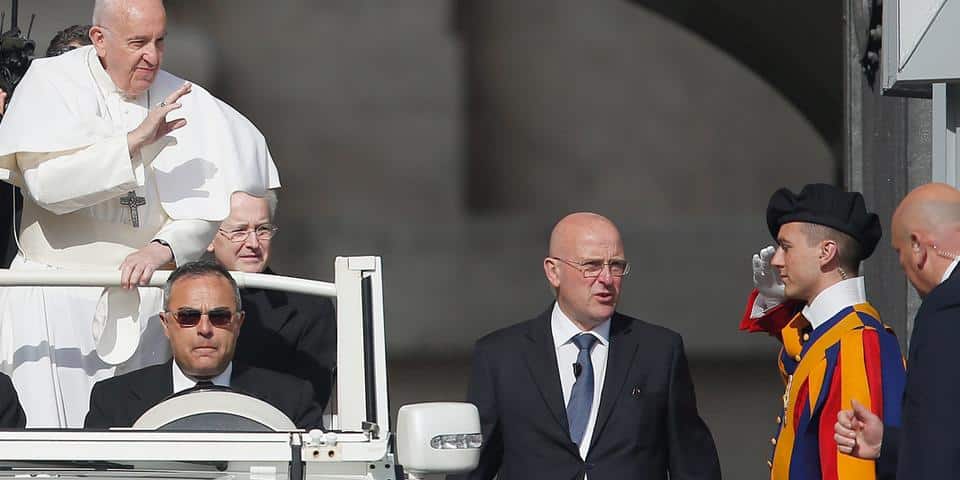

24858 views
Written by: Kate Zusmann

The independent city-state of the Vatican (Città del Vaticano) was founded following the Lateran Treaty between the Italian State and the Roman Catholic Church in 1929. An area of 110 acres was appended to the treaty, together with other properties formally located within the State of Italy, but granted extraterritoriality.
The Vatican City State has never had independent armed forces. However, it has always had a de facto military granted by the armed forces of the Holy See, including the Pontifical Swiss Guard, Palatine Guard, Noble Guard, and Papal Gendarmerie Corps. These armed forces have functioned within the Vatican City, the Papal Palace of Castel Gandolfo, and in several other extraterritorial properties of the Holy See. Moreover, the government has not engaged in any war since its formation in 1929 by the Lateran Treaty.
Since the Vatican is located on the territory of Italy, the responsibility for defending the State from any international aggressor lies with the Italian Armed Forces. In addition, during World War II, the troops of the Palatine Guard were applied to all Papal properties in and around Rome.
The Pontifical Swiss Guard is an army maintained by the Holy See. It is responsible for the security service of the Pope, including the protection of the Apostolic Palace. Together with the Corps of Gendarmerie of Vatican City, a civilian force, it controls access to the entrances to the city-state.
In addition, Pope Paul VI abolished the Noble Guard and the Palatine Guard in 1970. After the disbandment, the Papal Army (Esercito Pontificio) included two regiments of locally recruited Italian infantry, two Swiss units, a battalion of Irish volunteers, artillery, and dragoons, and the international Catholic volunteer corps the Papal Zouaves, constituted in 1861 to resist Italian unification. Because of the defeat and abolition of the states by the Italian Kingdom, four small papal units were saved but restricted from functioning in the Vatican in the Eternal City.
The Swiss Guard has been the only active military in Vatican City since 1970. The army’s officers’ rank markings include the Chaplain of the Guard, who ranks as a Lieutenant Colonel, and the Commandant, a senior member of the Papal Household. Moreover, the Commandant’s coat of arms appears in the middle of the Swiss Guard standard for the period of his command.
Contents
ToggleThe Pontifical Swiss Guard, also called Papal Swiss Guard (Latin: Cohors Helvetica or Cohors Pedestris Helvetiorum a Saca Custodia Pontificis), serves as the military of the Vatican City. The Swiss Guard was established in 1506 under Pope Julius II. His choice to hire Swiss mercenaries was connected to their reputation of being invincible and loyal. The Pope’s security service started to exist more than 500 years ago, and today, the powerful armory army is responsible for Pope Francis’s safety.
Nowadays, the Swiss Guard functions primarily as a ceremonial unit, but it is professionally trained to use weapons to protect the Pope.
The Swiss Guard wears blue, red, orange, and yellow costumes with a Renaissance-inspired appearance. The uniform is usually worn with a blue basque cap. The soldiers are also equipped with traditional weapons, such as halberds and modern firearms. One of the most notable aspects of the Swiss Guard is its vintage armory.
If you want to join Pope’s security forces, you must follow unique criteria: the candidate must be an unmarried Swiss Catholic male between 19 and 30 years old, trained with the Swiss Armed Forces. Guards can marry after getting 25 years old after serving for three years or more. In addition, applicants must be at least 174 cm tall, while Swiss nationality is a prerequisite for joining the Corps.
The Palatine Guard (Guardia Palatina d’Onore) served as a military unit of the Vatican City State. Pope Pius IX, who combined two military units of the Papal States, constituted the Guard in 1850. The Corps was formed as an infantry unit and served as security keeping in Rome. The only time it was an active service was during the token resistance on September 20, 1870, to the occupation of Rome by Italian government troops. Moreover, the Guard survived into the period of the Vatican City State as a de facto Vatican military unit from 1929 until 1970.
After the formation of the Palatine Guard, they performed ceremonial functions as a guard of honor. As a rule, they were seen either when the Pope was in St. Peter’s Square or when the Pope received ahead of the State or any other important guest. Moreover, the corps members were part-time volunteers, and their service was not paid. However, they received an allowance to get or repair their uniforms. The Corps was the only one benefiting the Vatican City State to have a full military band.
In September 1939, the Palatine Guard numbered 500 men, while by the liberation of Rome in June 1944 – the number had grown to 2000 men.
Consequently, the Corps returned to the smaller size and chiefly ceremonial duties. In addition, Pope Paul VI, as mentioned above, abolished it on September 14, 1970.
Read also about Palatine Hill.

Pope Pius VII formed the Noble Guard (Guardia Nobile) in 1801. The regiment initially constituted a heavy cavalry unit and served as part of the Pope’s personal Guard. Moreover, the Guard carried out special missions within the Papal States until their abolition and then functioned at the Vatican with a limited mounted escort role. Into the Vatican City State period, as a de facto military unit, the Noble Guard served from 1929 until 1970.
The guardsmen were available for particular missions within the Papal States, and one of their first duties was to escort Pius VII to Paris for the coronation of Napoleon Bonaparte. As a cavalry unit, the Noble Guard had little opportunity to deploy on horseback in the borders of the Vatican, even though two mounted troopers would accompany the papal carriage when the Pope was heading to the Vatican Gardens. If previously, the guardsmen were armed with carbines, pistols, and sabers, after 1870, they started to carry only a sword.
In 1904, mounted service was canceled entirely, and all the horses were sold off.
The Corps consisted of volunteers who were not paid for their service. Recruits were chosen from noble families in Rome. The commander of the Corps was called the Captain. At the same time, one of the subordinate positions within the Corps was the Hereditary Standard-Bearer, who was responsible for maintaining the standard of the Catholic Church.
Pope Pius VII formed the Papal Gendarmerie Corps (Corpo di Gendarmeria Papale) in 1816. Its original name was the Papal Carabinieri Corps, and the unit served as a military police unit. In 1849, it was renamed by Pope Pius IX as the Papal Velites Regiment and later as the Papal Gendarmerie Corps. The Papal Gendarmerie Corps saw active military engagement in the battles during the abolition of the Papal States. Moreover, the Corps survived into the period of the Vatican City State as a de facto military unit, providing internal security.
In 1970, the corps was changed into a civilian police unit named the Central Security Office.
In 1991, it was renamed the Security Corps of Vatican City State. Later, in 2002, the policing role changed its definition and acquired its present name, Gendarmerie Corps of the Vatican City State. Significantly, until 1970, when it served as a military unit, the Corps had to elaborate ceremonial uniforms. Nowadays, all its structures are of a civilian police service, which retains some formal functions—for instance, the provision of the Vatican’s proper marching band.
Have you ever been to the Vatican? Want to try yourself as a Swiss Guard? 🙂
Author: Kate Zusmann
This website uses cookies. For more info read the cookies policy
Rome.us © 2025. Created with love by Roman experts and guides.